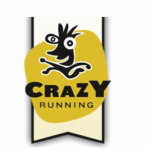Whether you’re a parent of a young athlete or a coach, we have the right strength and conditioning programs for you. Learn about Power exercises, Stretching, Off-season programs, Frequency, and more. Contact us to learn more. We’ll work with you to develop a program that will keep you and your athletes healthy and performing at the highest level.
Power exercises
Proper conditioning is key to prevent injuries in sports. Here are five exercises that can help kids improve their conditioning and stay safe at the same time. Burpees are a classic example. These exercises involve squatting, jumping, and falling. Although they may cause adult cringes, young athletes can do them with proper technique.
Squats: This exercise works both the hips and lower extremities and helps develop explosiveness. It is also an excellent way to introduce children to new skills. It also improves balance and proprioception.
Off-season program
In the off-season, an athlete should focus on building muscle mass and strength. The larger the cross-sectional area of a muscle, the greater the force it can produce. Strength training involves stressing the muscles to increase their size and strength. It is possible to strength train young kids and athletes without expensive equipment, as bodyweight exercises can be effective. Athletes can also incorporate cardio exercises, such as running or biking, into their off-season strength and conditioning program.
A good off-season strength and conditioning program for young kids or athletes should focus on general strength and conditioning as well as foundational movement patterns. This will provide a solid foundation for future athletic development. While improving fundamental movement patterns is essential for improving overall athleticism, conditioning work will prepare the athlete’s aerobic system for the high-intensity demands of the competitive season. A good off-season strength and conditioning program will also enhance an athlete’s potential to jump higher, throw harder, and sprint faster.
Frequency
For young kids and athletes, a good starting point for a strength and conditioning program is two strength training sessions per week. The amount of training volume is dependent on the child’s age and sport demands, and it’s best to vary training styles. It’s best to use low repetitions at high external loads, which are more effective for developing athletic performance. The goal is to improve the overall strength and conditioning of the body while avoiding overtraining.
Research has shown that youth can improve their strength by up to 50% after eight to twelve weeks of strength training. After the initial phase of strength training, youth need to do it at least twice a week to maintain their new strength. While many youth experience injury while strength training, these injuries can be avoided by participating in a well-supervised program under the supervision of a trained fitness professional. The fitness professional can ensure proper technique, form, and progression.
Impact on self-esteem
Researchers have looked at a wide range of topics regarding the impact of strength and conditioning on self-esteem, including sports participation, socialization, and peer acceptance. While the findings vary, many suggest that sport participation increases self-esteem. One study, conducted by Perry-Burney and Takyi, found that high self-esteem was associated with participating in team sports and religious affiliations.
The impact of resistance training on self-esteem was found in both male and female athletes. A study conducted on young boys found that the intervention group had a higher global self-esteem than the control group. Similarly, a study of student athletes found that the presence of peer acceptance and the use of sport participation reduced feelings of anxiety.
Prevention of injuries
Strength and conditioning for young kids and athletes is an important part of a healthy lifestyle. It helps kids develop the right skills and habits and can prevent injuries. It’s also an excellent way to promote good sportsmanship and discipline. Children should also wear proper protective equipment. Depending on the sport, they may need a helmet. For example, they may need a helmet when skating or riding a scooter. Coaches can recommend the appropriate protective gear.
Young athletes should avoid overtraining and excessive activity. The American Academy of Pediatrics suggests that athletes should focus on one sport for no more than 5 days a week. In addition, athletes should take two to three months off per year. This will help them develop lifelong fitness skills while also having fun.


